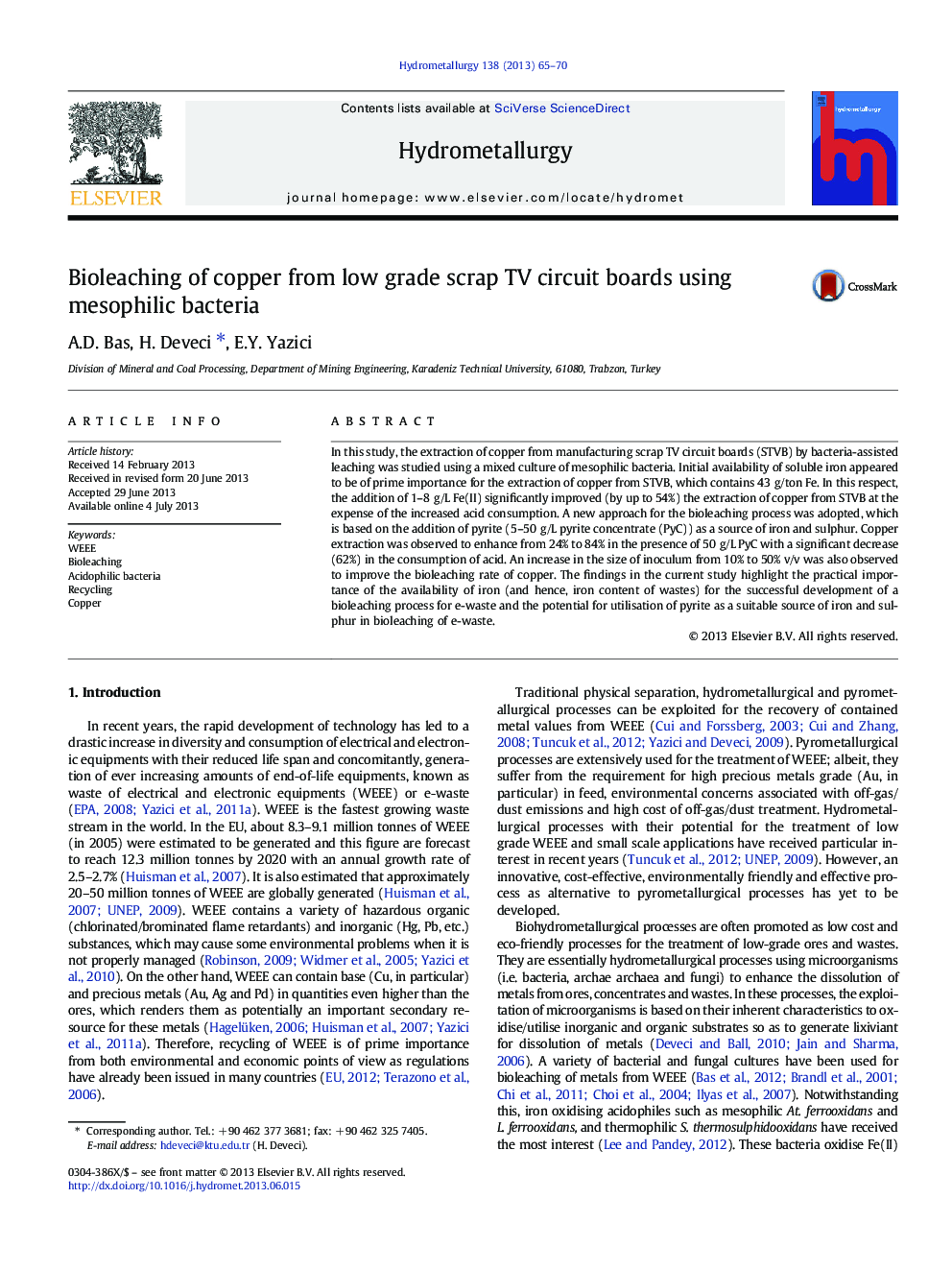| Article ID | Journal | Published Year | Pages | File Type |
|---|---|---|---|---|
| 6659306 | Hydrometallurgy | 2013 | 6 Pages |
Abstract
In this study, the extraction of copper from manufacturing scrap TV circuit boards (STVB) by bacteria-assisted leaching was studied using a mixed culture of mesophilic bacteria. Initial availability of soluble iron appeared to be of prime importance for the extraction of copper from STVB, which contains 43Â g/ton Fe. In this respect, the addition of 1-8Â g/L Fe(II) significantly improved (by up to 54%) the extraction of copper from STVB at the expense of the increased acid consumption. A new approach for the bioleaching process was adopted, which is based on the addition of pyrite (5-50Â g/L pyrite concentrate (PyC)) as a source of iron and sulphur. Copper extraction was observed to enhance from 24% to 84% in the presence of 50Â g/L PyC with a significant decrease (62%) in the consumption of acid. An increase in the size of inoculum from 10% to 50% v/v was also observed to improve the bioleaching rate of copper. The findings in the current study highlight the practical importance of the availability of iron (and hence, iron content of wastes) for the successful development of a bioleaching process for e-waste and the potential for utilisation of pyrite as a suitable source of iron and sulphur in bioleaching of e-waste.
Related Topics
Physical Sciences and Engineering
Chemical Engineering
Chemical Engineering (General)
Authors
A.D. Bas, H. Deveci, E.Y. Yazici,
